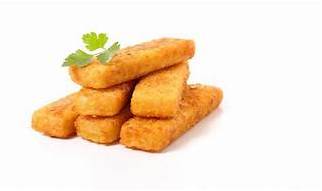Fish Spoilage: Fish spoilage is a complex process driven by three main factors: enzymatic activity, bacterial growth (Microbial action), and oxidation (Chemical action). These factors work together to break down the fish’s tissues, leading to changes in its appearance, texture, odor, and flavor, rendering it unfit for consumption.
What is Fish Spoilage?
t refers to the contamination of fish, resulting in an undesirable change in the colour, texture, flavour, odour, appearance, etc. Spoilage of fish is also called “Putrefaction”. In the cooler regions of the world the fish preservation is not required for a few days after their capture. This is because, the temperature is low enough to discourage the bacterial growth and so the spoilage of fishes is minimized. In tropical regions such as India, the hot climate favours rapid growth of bacteria and so the spoilage of fish flesh becomes inevitable. Landed fishes may ordinarily remain fresh for not more than 8 hours and begin to decompose rapidly after that. The decomposition or spoilage of fish flesh occur mainly due to various chemical, microbial and the enzymatic action.
Microbial Action (bacterial growth)
Microbial action involves bacterial decomposition of the fish flesh. The bacteria are found in the lower part of the gastrointestinal tract and on the general body surface of the fish. They may also be contributed from the surrounding insanitary a most suitable place for their growth and multiplication. Proteins, constituting 70 – 90 % are degraded by proteolytic organisms such as Pseudomonas, Proteus, Chromobacterium, Halobacterium, and Micrococcus , etc. The Carbohydrates, present in small amount in the fish flesh are spoiled by carbohydrate fermenting organisms like Streptococcus, Leuconostoc, Micrococcus , etc. Fats constituting 3 – 5 % of the flesh are digested by relatively few gram negative bacteria. Degradation process occurs through the processes of bacteria feed on the fish’s tissues, further breaking down proteins, lipids, and carbohydrates. ‘Fish Spoilage’
Proteins

Carbohydrates

Fats

Signs appear on fish body by microbial action:
Increased slime production: Bacteria produce slimy substances as they grow, making the fish’s surface appear slimy and sticky.
Discoloration: As bacteria break down pigments in the fish, its skin and flesh may change color, becoming dull, grayish, or discolored.
Off-odors: Bacterial breakdown produces various volatile compounds, including ammonia, amines, and sulfides, which contribute to the characteristic “fishy” odor of spoiled fish.
Enzymatic action (oxidation)
Enzymatic action is due to action of various enzymes found in the body tissues / cells of fishes. They spoil the tissue by the process of autolysis and make the fish susceptible to bacterial attack. Proteinase for example can digest muscle proteins of the fish, catalyse the gill spoilage and ATPase brings about a complete disappearance of ATP, from muscle tissue in 6 to 8 hours. Autolysis of protein results in formation of amino acids and other nitrogenous products, which on further decomposition produces ammonia, carbon dioxide, volatile basic compounds like various amines and fatty acids, and foul smelling products like indole, skatole, etc.
Autolysis: This refers to the self-digestion of fish tissues by its own enzymes. These enzymes, naturally present in the fish, start breaking down complex molecules like proteins and lipids immediately after death. This leads to:
- Softening of flesh: As proteins are broken down, the muscle fibers lose their structure, making the flesh soft and mushy.
- Loss of flavor and aroma: The breakdown of proteins and lipids also releases volatile compounds that contribute to the fresh flavor and aroma of fish. Their degradation leads to a bland or off-putting taste and smell.
Chemical action
The chemical action involves oxidation of fat, contained within the fatty tissues of the fish. It is more pronounced in fat fishes (e.g. oil sardine, mackerels, catla, trout, grass carp etc.) which as a result become decolourised. The oil starts getting oxidized as soon as it comes in contact with the atmospheric air, which is known as rancidity. The colour of the fat and its viscosity changes and Fig – 9.4 the fish becomes strong tasted. Methods employed to prevent rancidity include application of antioxidants like polyphenols or other viscous fluid and minimizing exposure of fish to atmospheric air.
- Fat oxidation: This occurs primarily in fatty fish. Oxygen from the air reacts with the fats in the fish, leading to the formation of rancid compounds.
- Changes in flavor and aroma: Rancid compounds have an unpleasant oily or soapy taste and odor, making the fish unpalatable.
Stages of Fish Spoilage:
Fish spoilage progresses through different stages, each with distinct characteristics:
- Initial stage: This stage is characterized by subtle changes in texture and odor, which may not be readily noticeable.
- Intermediate stage: The fish becomes softer, discolored, and develops a stronger off-odor. Slime production may also become evident.
- Advanced stage: The fish becomes very soft, with significant discoloration and a strong, offensive odor. At this stage, the fish is completely spoiled and unsafe for consumption.
Factors Affecting Spoilage Rate:
Several factors influence the rate of fish spoilage, including:
- Type of fish: Fatty fish generally spoil faster than lean fish due to higher fat content, which is prone to oxidation.
- Handling practices: Improper handling, such as rough handling, inadequate bleeding, and storage at warm temperatures, can accelerate spoilage.
- Storage conditions: Maintaining proper storage temperature (ideally below 4°C) is crucial to slow down bacterial growth and enzymatic activity.
Prevention of Fish Spoilage:
Implementing proper handling, storage, and processing techniques can significantly extend the shelf life of fish and prevent spoilage. Some key measures include:
- Proper handling: Handle fish carefully to minimize damage and bruising.
- Chilling and icing: Immediately chill or ice the fish after catching or purchase.
- Maintaining proper storage temperature: Store fish at a temperature below 4°C, preferably using a refrigerator or freezer.
- Hygiene: Maintain proper hygiene during handling and processing to minimize bacterial contamination.
- Processing methods: Employ appropriate processing methods like salting, drying, or canning to further extend shelf life.
By understanding the process of fish spoilage and implementing proper handling and preservation techniques, we can ensure the quality and safety of fish for consumption.
FAQs
- How can I identify spoiled fish?
- Look for off-putting odors, changes in color, texture, and the presence of slime or discoloration.
- What are the health risks of consuming spoiled fish?
- Consuming spoiled fish can lead to foodborne illnesses, including nausea and digestive issues.
- How can I prevent fish spoilage at home?
- Store fish at proper temperatures, use airtight containers, and consume or freeze it quickly.
- Are there international standards for seafood quality?
- Yes, many countries adhere to international standards, ensuring the quality and safety of seafood.
- How does sustainable fishing reduce fish spoilage?
- Sustainable fishing practices help preserve marine ecosystems and ensure a steady supply of fresh and high-quality seafood.




